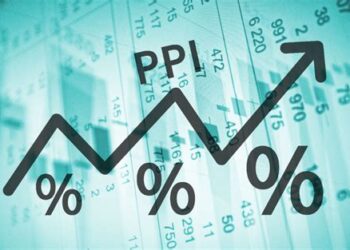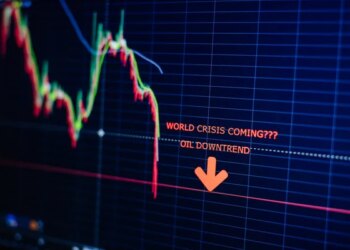In the global search for significant investment returns, seasoned investors and newcomers alike are increasingly turning their gaze toward emerging markets. These dynamic, fast-growing economies represent a departure from the saturated, slower-growth environments of developed nations like the United States, Japan, and Western Europe. While names like Brazil, India, and Vietnam may evoke images of vibrant culture and rapid industrialization, they also represent a compelling, and complex, investment thesis: the potential for outsized returns. But what exactly powers this potential, and what are the critical risks that every investor must navigate?
Emerging markets are, in essence, nations in a state of rapid economic transformation. They are moving away from traditional, often commodity-based economies, toward a more industrialized and modern framework. This transition is characterized by a burgeoning middle class, significant infrastructure development, and a demographic dividend of a young, ambitious workforce. For investors, this translates into a ground-floor opportunity to participate in what could be the most significant growth stories of the 21st century. The appeal is simple—investing in a country with a GDP growth rate of 6-7% offers a fundamentally higher ceiling for returns than investing in one growing at 1-2%.
This comprehensive guide will explore the multifaceted world of emerging market investing. We will dissect the powerful drivers behind their high-return potential, from favorable demographics to technological leapfrogging. We will also cast a critical eye on the significant risks—including political instability and currency volatility—that are an inseparable part of this landscape. Finally, we will outline the practical strategies and vehicles, from ETFs to mutual funds, that you can use to gain exposure to these exciting markets, helping you determine if this high-stakes opportunity is the right fit for your portfolio.
The Engine Room: What Drives High Returns in Emerging Markets?
The potential for superior returns in emerging markets is not based on speculation alone. It is fueled by a confluence of powerful, long-term macroeconomic and social trends that create a fertile ground for explosive growth.
A. Favorable Demographics and a Growing Middle Class: One of the most significant advantages for many emerging economies is their demographic profile. Unlike the aging populations in much of the developed world, countries like India, Indonesia, and Nigeria boast a large, young, and increasingly educated workforce. This “demographic dividend” fuels both production and consumption. As millions of people move from rural areas to cities and enter the middle class for the first time, their purchasing power explodes. This creates a massive, new consumer base eager for goods and services ranging from smartphones and banking to healthcare and entertainment, driving revenue growth for companies operating in these regions.
B. Technological Leapfrogging: Emerging markets often have the advantage of bypassing legacy technologies entirely. While developed nations spent decades building out landline telephone networks, many emerging economies jumped straight to mobile and digital infrastructure. This “leapfrogging” allows for the rapid adoption of new technologies like mobile banking, e-commerce, and digital payments on a massive scale. Companies that facilitate this technological shift can experience exponential growth, creating significant value for early investors.
C. Infrastructure Development: To support their expanding economies, emerging markets are investing trillions of dollars in infrastructure. This includes the construction of new airports, high-speed railways, modern shipping ports, and reliable energy grids. This massive capital expenditure creates a ripple effect, boosting sectors like construction, materials, and logistics while laying the groundwork for further economic efficiency and growth for decades to come.
D. Higher Economic Growth (GDP): The most straightforward driver is the sheer pace of economic expansion. Emerging economies are projected to grow at a rate significantly faster than their developed counterparts. This robust GDP growth creates a rising tide that lifts many boats—corporate earnings tend to rise faster, stock market valuations can expand, and the overall economic pie gets bigger for everyone, rewarding investors who are positioned to benefit from this expansion.
E. Market Inefficiencies and Undervaluation: Because they are less scrutinized by analysts and large institutional investors, emerging markets can be less efficient than developed markets. This inefficiency can lead to mispriced assets and undervalued companies with stellar fundamentals. For diligent investors willing to do the research, this presents an opportunity to find hidden gems before they are discovered by the broader market, leading to significant alpha.
Navigating the Gauntlet: Understanding Emerging Market Risks

The potential for high returns is always accompanied by significant risk, and emerging markets are no exception. Investors must approach this terrain with a clear understanding of the potential pitfalls that can swiftly erode capital.
A. Political and Geopolitical Instability: This is arguably the most significant risk. Emerging markets can be susceptible to sudden political changes, including shifts in government policy, social unrest, corruption, and even military conflicts. A new government could impose trade tariffs, nationalize key industries, or default on its debt, any of which could have a devastating impact on investments. Geopolitical tensions between nations can also disrupt supply chains and investor sentiment without warning.
B. Currency Volatility (Forex Risk): When you invest in a foreign market, you are exposed to fluctuations in its currency. If you invest in Brazilian stocks, for instance, you are not only betting on the performance of the companies but also on the strength of the Brazilian Real versus your home currency. A sharp depreciation in the local currency can wipe out even handsome gains in the stock market when you convert your returns back. Factors like inflation, interest rate changes, and political instability can cause extreme currency swings.
C. Lack of Transparency and Weaker Corporate Governance: Companies in emerging markets may not be subject to the same stringent accounting, auditing, and reporting standards as those in developed markets. This lack of transparency can make it difficult to assess a company’s true financial health. Weaker corporate governance standards can also mean that minority shareholder rights are not as well protected, increasing the risk of mismanagement or fraud.
D. Liquidity Risk: Some emerging stock markets are smaller and have fewer active traders. This can result in lower liquidity, meaning it may be difficult to buy or sell large positions quickly without affecting the market price. During a market panic, this illiquidity can be exacerbated, making it challenging to exit a position at a fair price.
E. Commodity Price Fluctuations: Many emerging economies are heavily reliant on the export of commodities like oil, copper, or agricultural products. A sharp drop in the global price of these commodities can severely damage their economies, leading to lower corporate profits, a weaker currency, and a decline in the stock market.
How to Invest: Your Gateway to Global Growth
Gaining exposure to emerging markets has become easier than ever. Investors have several vehicles to choose from, each offering a different balance of diversification, risk, and control.
A. Emerging Market ETFs (Exchange-Traded Funds): For most investors, ETFs are the most practical and cost-effective entry point. These funds track a broad index of emerging market stocks, such as the MSCI Emerging Markets Index, providing instant diversification across hundreds or even thousands of companies in dozens of countries. This diversification helps mitigate the risks associated with any single company or country. They trade like stocks and typically have very low expense ratios.
B. Actively Managed Mutual Funds: For those who believe in the value of professional stock picking, actively managed mutual funds are a strong option. A fund manager with deep expertise in the region attempts to outperform the index by selecting what they believe are the best companies. While these funds charge higher fees, a skilled manager can potentially navigate the risks and uncover opportunities that an index fund would miss.
C. American Depositary Receipts (ADRs): ADRs represent shares of a foreign company that are traded on a U.S. stock exchange. They allow investors to buy and sell shares in individual emerging market giants—like Taiwan Semiconductor Manufacturing Company (TSM) or MercadoLibre (MELI)—as easily as they would trade shares of Apple or Amazon. This approach offers targeted exposure but lacks diversification.
D. Emerging Market Bonds (Debt): Beyond stocks, investors can also buy emerging market debt. This can be issued in the local currency or in a hard currency like the U.S. dollar. Dollar-denominated bonds remove the currency risk for U.S. investors and often offer higher yields than U.S. Treasury bonds, albeit with higher credit risk.
The Verdict: A Calculated Risk for the Growth-Oriented Investor

Emerging markets are not a “get rich quick” scheme. They are a long-term strategic allocation for investors with a high-risk tolerance and a patient outlook. The path to high returns will inevitably be volatile, marked by periods of both exhilarating growth and sharp downturns. However, the fundamental growth drivers—a young, consuming population, rapid technological adoption, and faster economic growth—remain powerfully intact.
For a well-diversified portfolio, a strategic allocation to emerging markets can serve as a powerful growth engine, offering returns that are increasingly hard to find in the developed world. By using diversified instruments like ETFs and maintaining a long-term perspective, investors can position themselves to benefit from the most dynamic growth stories on the planet while carefully managing the inherent risks. The question is not whether emerging markets offer high returns, but whether you have the discipline and risk appetite to capture them.












